Finding yourself with a pile of fabric scraps that are too small for most projects but too beautiful to discard?
Got scraps?!
Enter the ticker tape method—a perfect way to use those beloved scraps. Ticker tape quilting involves sewing small pieces of fabric onto a larger background, creating a mosaic-like design.
This technique is not only a great way to use up your scraps but also adds a unique, textured look to your projects.
In this article, we’ll explore why the ticker tape method is ideal for using fabric scraps and provide ideas for incorporating ticker tape into quilts, pillows, and other creative projects.
Whether you’re a seasoned quilter or just starting out, ticker tape quilting is a fun and easy way to make the most of your fabric stash.
Let’s dive into the world of ticker tape and see how you can turn your scraps into stunning works of art.
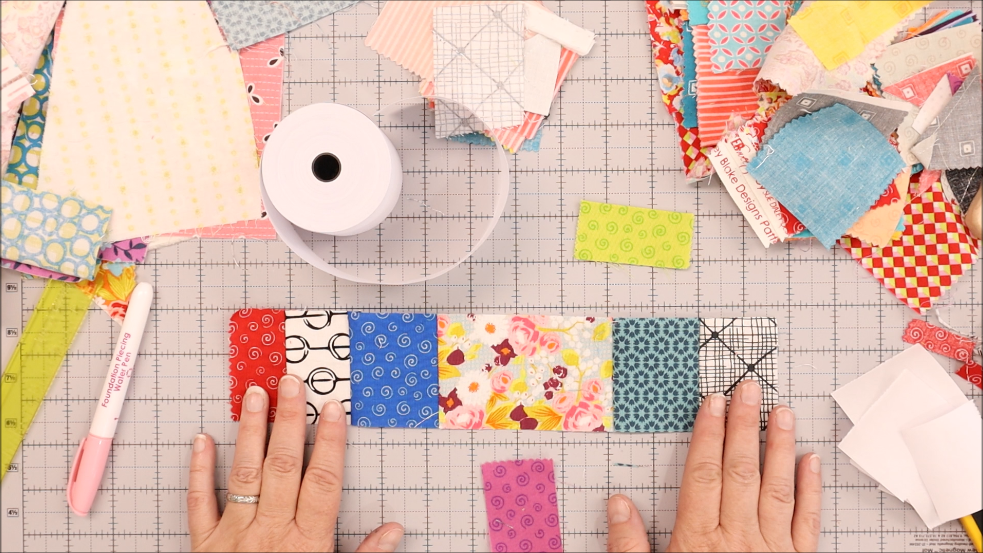
Why Using Scraps is Perfect for Ticker Tape:
- Reduces Waste: Ticker tape quilting is an excellent way to use up even the smallest fabric scraps, reducing waste and making the most of your fabric collection.
- Adds Texture: Sewing scraps onto a larger background creates a textured, layered effect that adds visual interest to your projects.
- Creative Freedom: With ticker tape, there are no rules—arrange your scraps in any pattern or design you like, allowing for endless creativity and personalization.
- Easy and Relaxing: This method is simple and doesn’t require precise cutting or piecing, making it a relaxing and enjoyable project for quilters of all skill levels.
Ideas for Using Ticker Tape:
- Quilts: Create a ticker tape quilt by arranging your scraps on a plain background fabric and sewing around the edges of each piece. This technique works well for both small lap quilts and larger bed quilts.
- Pillows: Add a unique touch to your home decor by making ticker tape pillows. Use your scraps to create colorful, textured pillow covers that are sure to be a conversation starter.
- Wall Hangings: Turn your scraps into a piece of art by creating a ticker tape wall hanging. Arrange the scraps in a pattern or random design on a fabric background, then frame or hang the finished piece.
- Table Runners: Brighten up your dining table with a ticker tape table runner. This is a great way to use up small scraps and add a pop of color to your table settings.
- Tote Bags: Customize a plain tote bag with ticker tape scraps. Sew the scraps onto the bag’s exterior for a fun, personalized accessory.
By using the ticker tape method, you can transform your fabric scraps into beautiful, one-of-a-kind projects. Whether you’re making a quilt, a pillow, or a wall hanging, ticker tape quilting allows you to creatively repurpose your scraps and add a unique touch to your creations.
Materials Needed:
- Ticker Tape I used the 2 1/4″ wide ticker tape
- Fabric scraps – you’ll want to use scraps that are larger than the ticker tape you are using. This is helpful when you are trimming this down
- Glue Stick for the first piece
- Foundation Water Pen – for removing the paper
- Wood presser
How To Sew Your Scraps to Ticker Tape
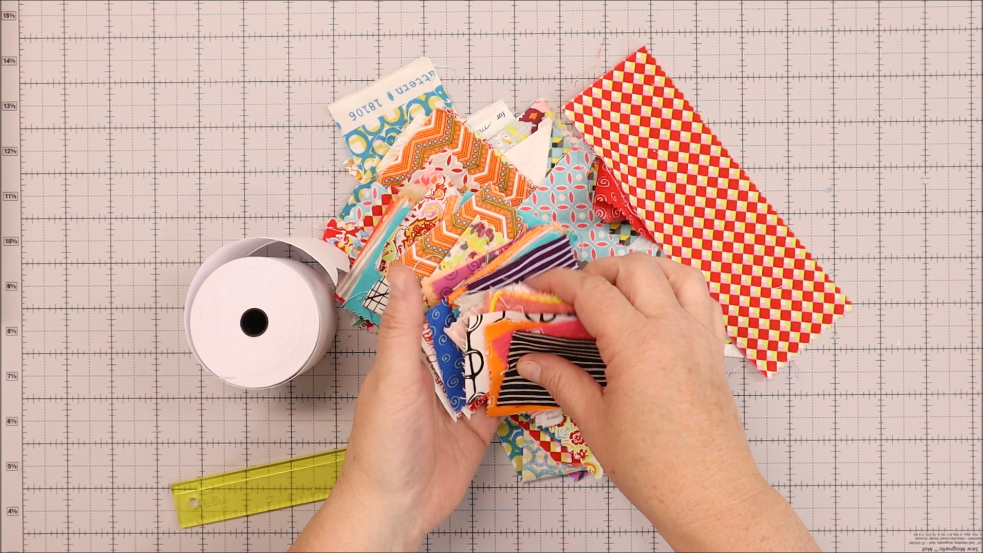
1- Gather your scraps. You’ll want to iron / press them prior to using. Get them all flat and nice and ready to use.

2- Unroll a small portion of your ticker tape
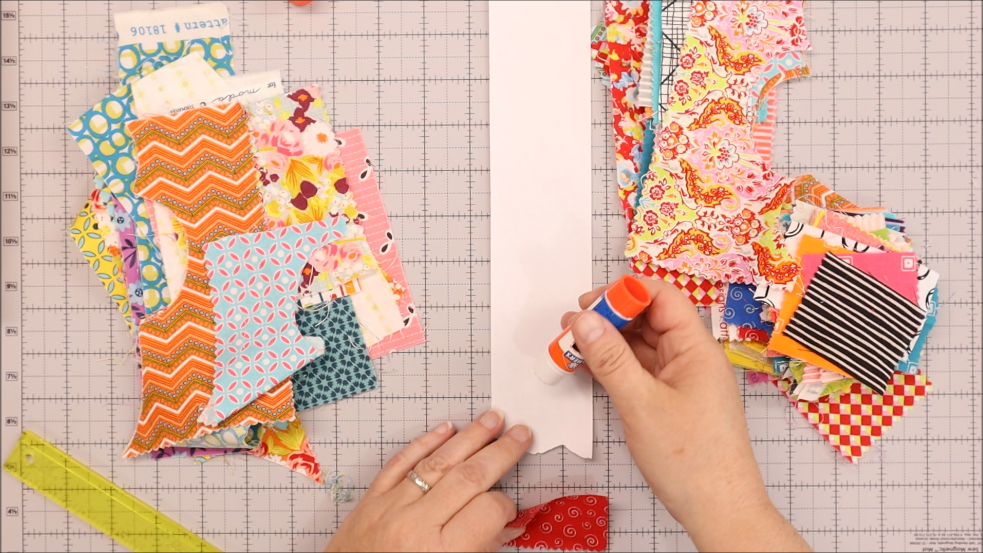
3- Using a glue stick, glue the first piece down to the paper – right sides facing up so it won’t shift at the sewing machine. You don’t need a lot of glue here!

4- Place the first piece in place on the glue. Lay the next piece – right sides facing on top.
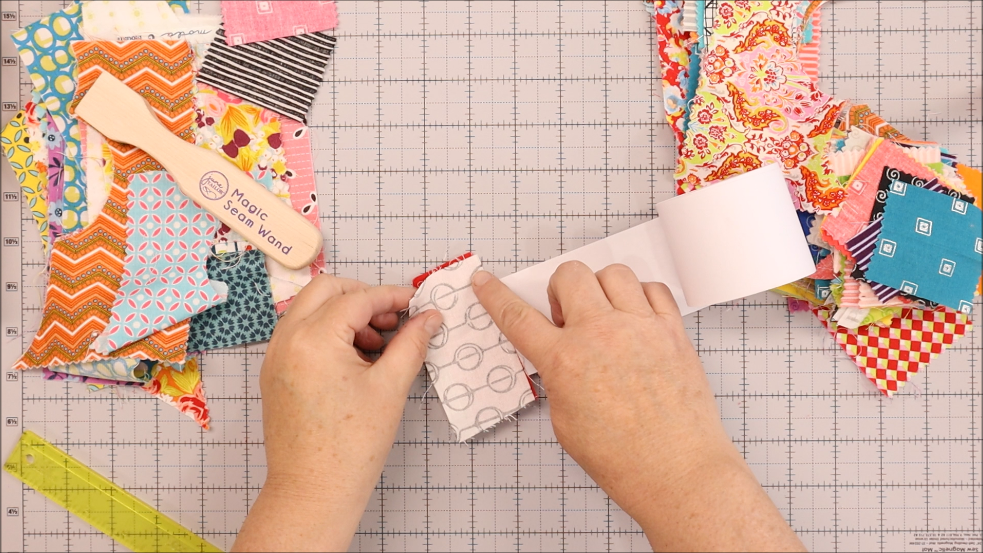
5- Stitch along the edge using 1/4″ seam
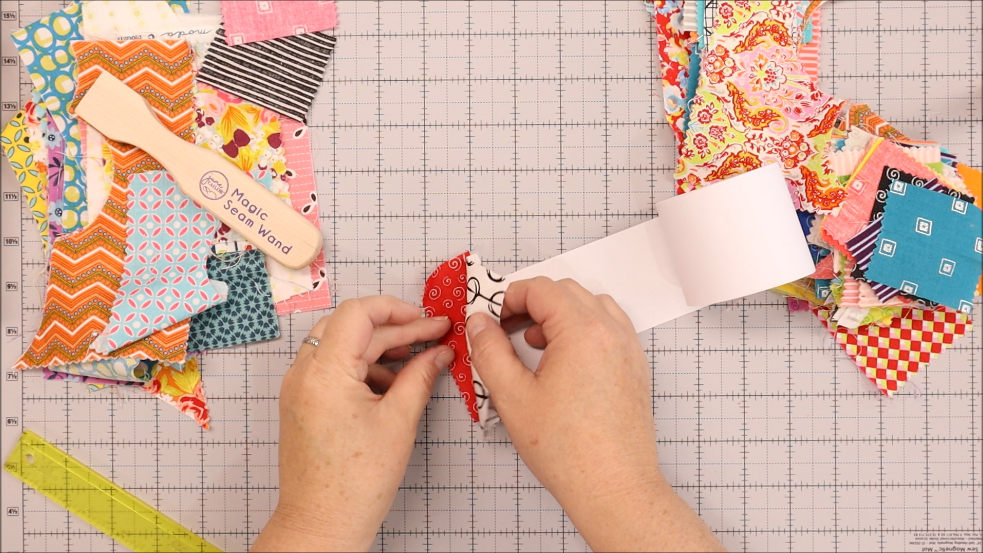
6- Flip this back and finger press
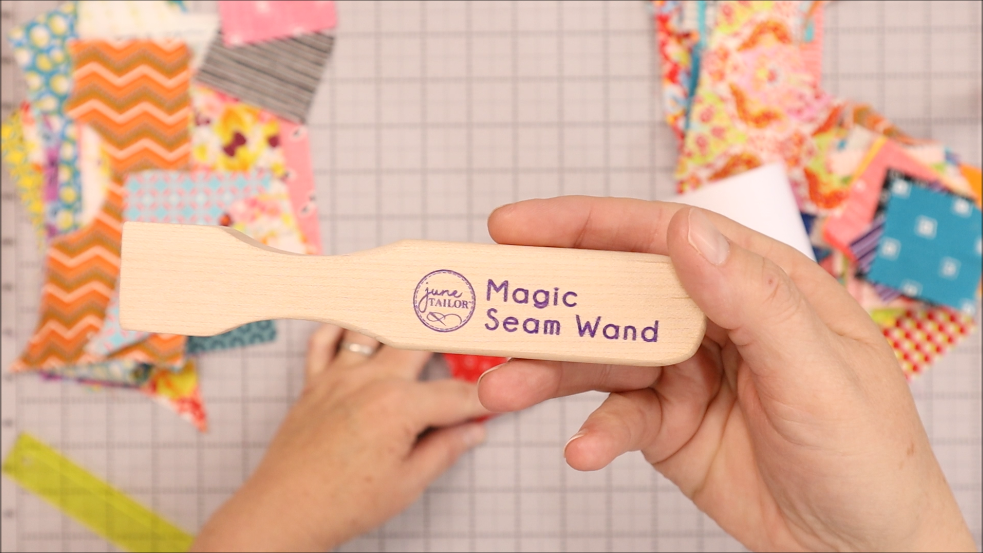

7- OR use a wood presser
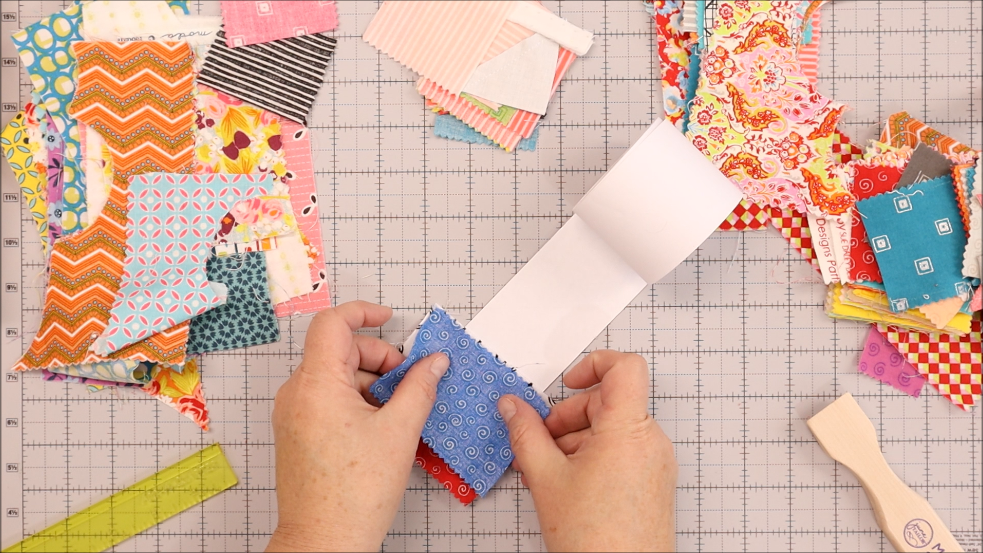
8- Place the next piece down – right sides facing and sew

9- Continue this process until you are happy
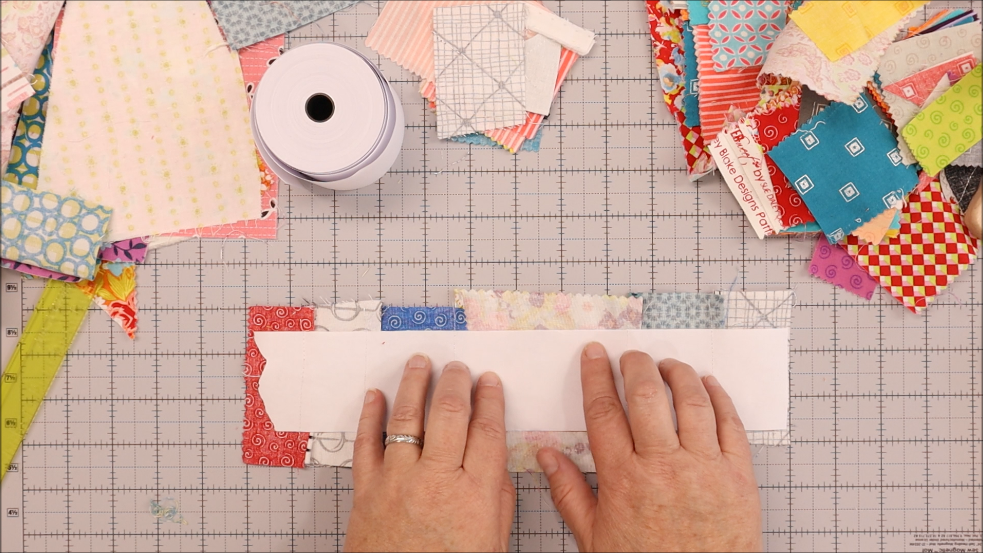
10- Flip to the wrong side – paper is facing up

11- Trim your fabric to the size you would like – either using the ticker tape width or larger if you would like. Just keep consistent with what you do for the rest of all the pieces that you sew
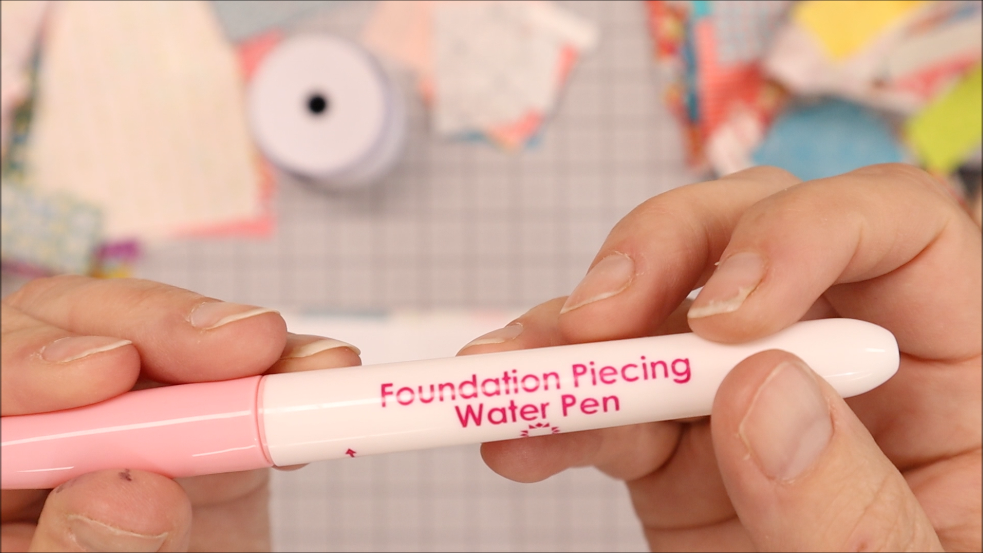
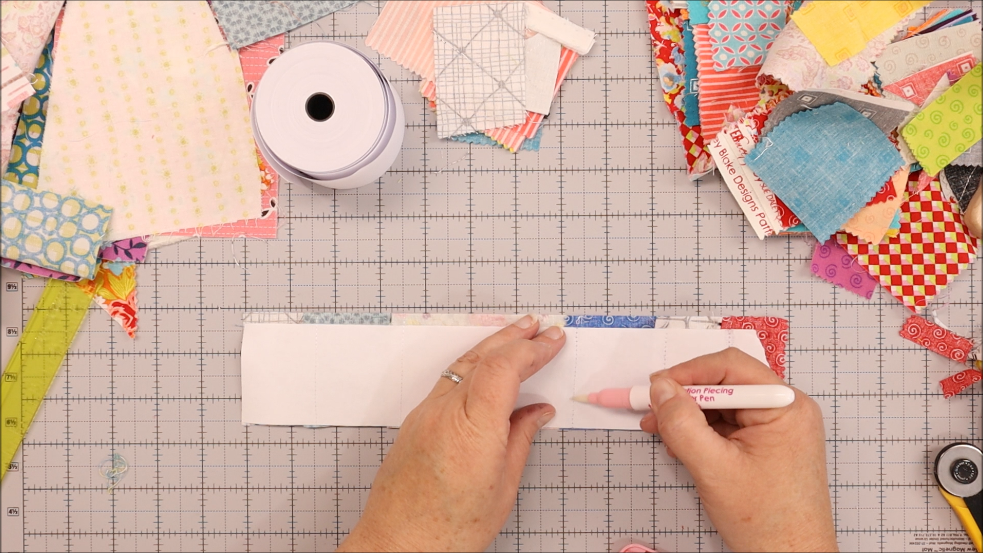
12- Using the Foundation Piecing Water Pen, draw on the seams
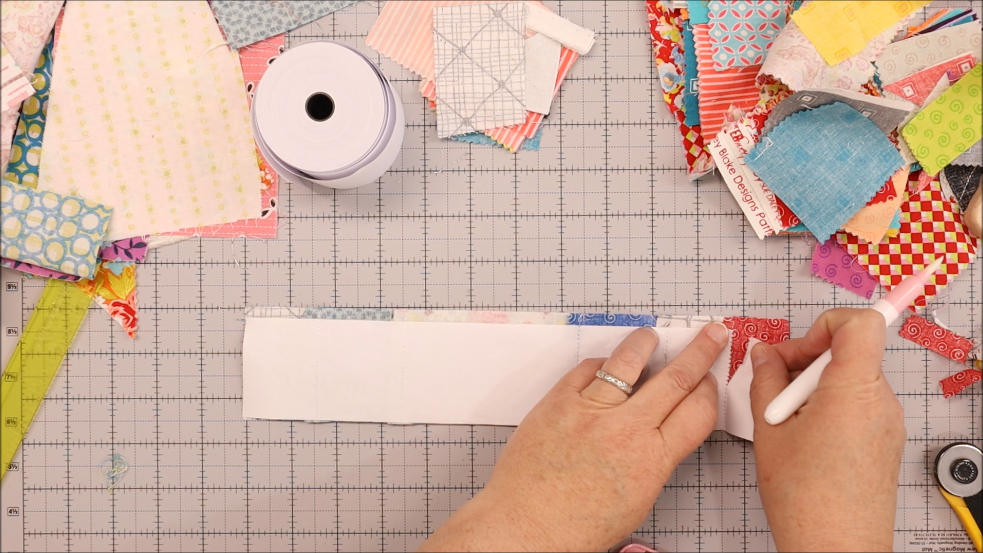
13- Remove the paper by folding and tearing. The water from the pen makes the paper fall right off without pulling on your seams
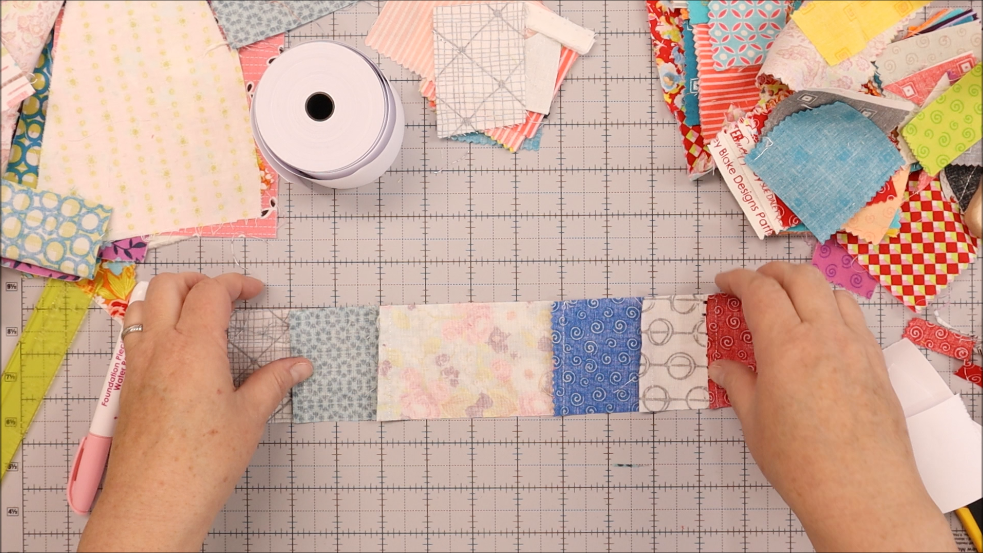
14- Your piece is done and should look really nice! It’s ready for the next step!
Using Ticker Tape for Sewing Scraps Video
FREQUENTLY ASKED QUESTIONS
Why is it called ticker tape?
Invented in 1867, ticker tape was a one-inch-wide ribbon of paper on which the “ticker” machine recorded telegraphed stock quotes. Brokerage firms using the ticker machine proliferated in Lower Manhattan, then as now the City’s financial district, and provided an abundant supply of scrap paper.
What size can I use for this method?
You can use whatever size of scraps you have! From 1″ to 5″. I wouldn’t go too big or you’ll have those large pieces in your quilt. You can save those pieces for something else. This method is ideal for using those little pieces that you have.
What if your piece isn’t wide enough?
If you are finding your pieces not large enough to cover the width of the ticker tape, then sew multiple pieces together to make it larger. Then used that combined piece as your next strip.
–Additional Scrap Fabric Resources–
How to make a Scrap Quilt

Use more of your scraps and learn how to make a scrap quilt – super cute, quick and a great way to use those scraps.
Cute and quick travel tissue cover

The travel tissue cover will take less than 30 minutes and is great for your scraps too!
Rail Fence Quilt for Beginners

If you have leftover scraps that are strips – the Rail Fence quilt (it’s free) is perfect to sew up!
- Using scraps for leaders and enders
- Quilt as you go scrappy ornaments
- Scrappy Needle Keeper Tutorial
Becky Jorgensen is the creative quilter behind Patchwork Posse, the Patchwork Planner and her online quilt group Patchworkers Plus. You can find her patterns in books, magazines, and her quilt membership. Gather your quilting supplies, organize your sewing space, explore the process of disappearing quilt blocks, or finish a free quilt pattern. I'll help you use what you have, finish what you start and make your quilting journey fun!
Follow me here: Facebook, Pinterest, YouTube

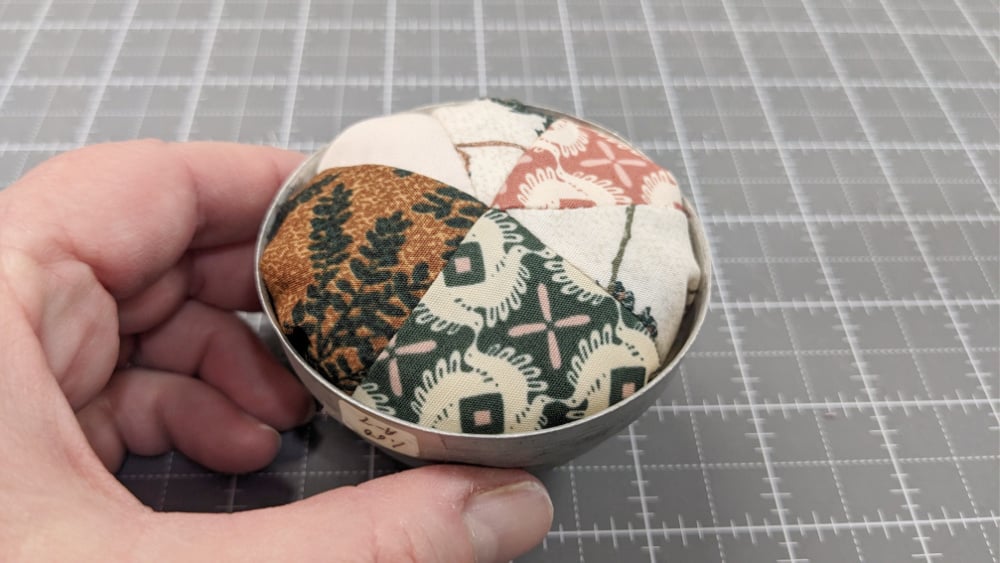
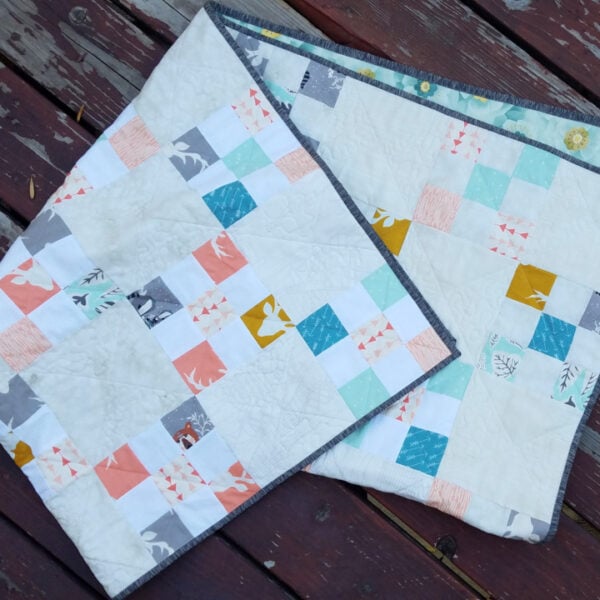




When using ticker tape paper for sewing scraps, what stitch length to use to make paper easier to remove—1.5 or less? If doesn’t matter, does using water pen make easier to ‘release’ paper?
I would still make the sewing machine length be smaller as when you are pulling the paper out, it doesn’t pull on those stitches and break them. The water pen definitely is helpful!